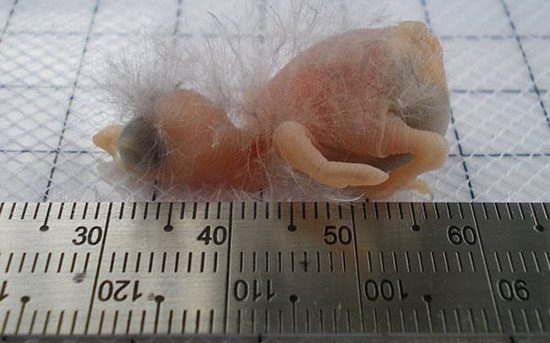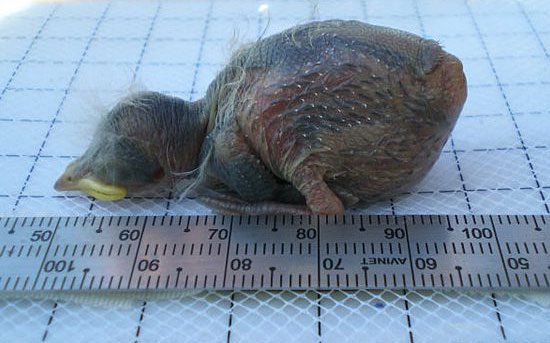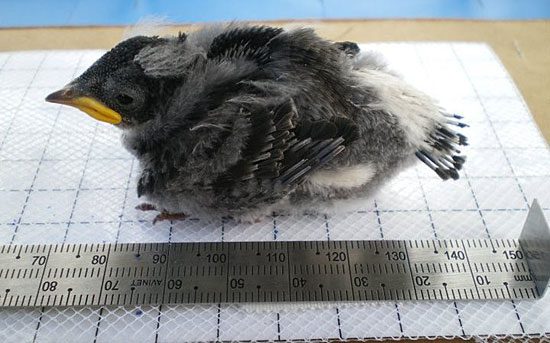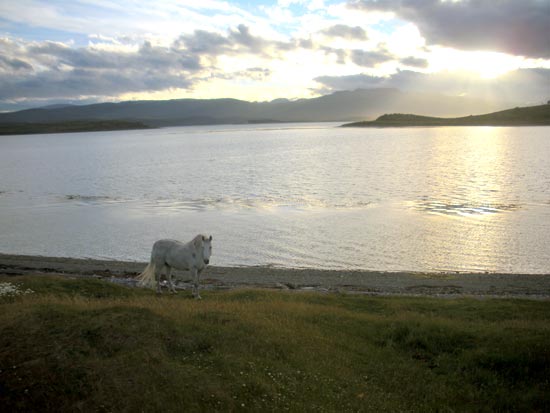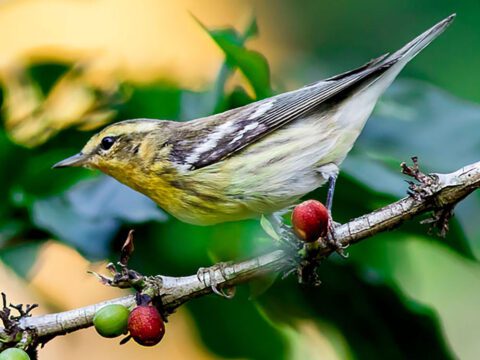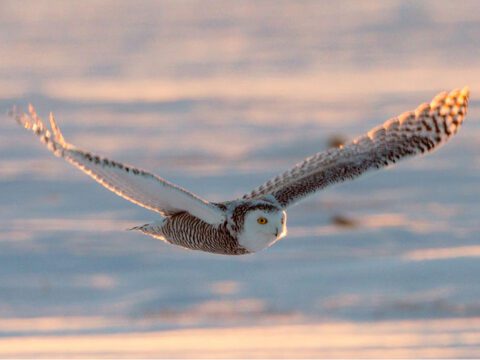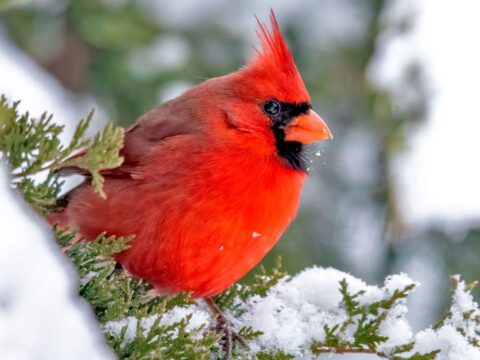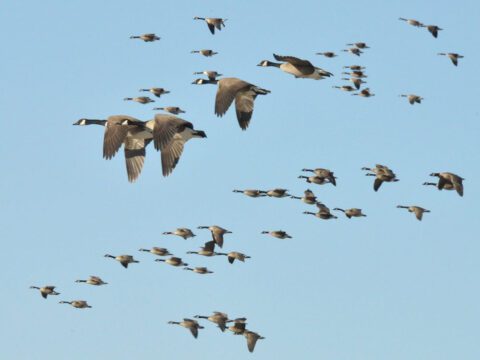The Ones That Get Away
By Daisy Yuhas January 17, 2011
This is a tiny Chilean Swallow chick on its first day out of the egg. 
At Day 6 the chicks are covered in thin gray down. 
By Day 12, the chicks are pudgy and beginning to grow pin feathers. 
The Chilean Swallow study takes place along the Beagle Channel of Argentina.
In Daisy Yuhas’s final post from Ushuaia, Argentina, she welcomes mosquitoes and bids a fond farewell to swallows:
A few days ago, for the very first time since I have arrived in Ushuaia, a mosquito bit my arm.
I was so stunned and, frankly, happy—these bugs are a staple in Chilean Swallow diets—that I didn’t even think to swish it away. It is finally summer here—not hot by the standards of most summers I have known, but a sunny persistence has settled in that promises the worst is over. As I approach the end of my time in Ushuaia, I can’t help marveling at how hard these little birds have worked over the past two months.
My reporting would be incomplete without mentioning the sample of nestlings that we monitored regularly after hatching, measuring their growth, banding them, and taking tiny blood samples for DNA analysis.
We measure the chicks regularly—following their stories from their very first day out of the egg to their twelfth after hatching. Over that time, they transform from small pink blobs to gray, fuzzy chicks with silvery pin feathers sprouting from their wings. Like their fiercely protective parents, Chilean Swallow nestlings are brave little birds. By the time they are nine days old, when we check on them we find them eager to stand up and wander off on their short little legs if we don’t watch them.
While it is impossible not to feel an attachment to these birds, I am fondest of the ones that get away—the nestlings that eventually fledge from their boxes. Thus far, two of our nests at Harberton have fledged. These birds were especially exciting for us as they were the nestlings that survived the December snowstorms and now brave an aerial existence.
In other Tachycineta species, such as Tree Swallows, nestlings are ready to fledge by about their fifteenth day after hatching—our birds take longer, fledging on the twentieth day if not later, though how much of this is dependent on conditions like the weather affecting their diet and growth is unclear.
The road ahead for the fledglings won’t be easy. Their parents will likely continue to assist them, as they learn to catch juicy mouthfuls of insects and fly with the dizzy grace characteristic of their genus. In many ways, the hardest part lies ahead—learning to fly, forage enough to survive, join in the winter migration.
All the same, I take a strange comfort in seeing these birds timidly peek their heads from the boxes, then pop out, still a bit awkward, and fly. Looking toward my own future, the journeys that lie ahead and destinations unknown, I realize that if nothing else the endurance and resilience of these birds has taught me a great deal about hope. At some point, no matter how uncertain, you simply have to take flight.
(Images courtesy Justin Proctor/Golondrinas. These swallow chicks are handled by trained researchers with the appropriate permits. They make their measurements quickly and carefully to avoid undue disturbance to the nests. Please do not try this at home!)

All About Birds
is a free resource
Available for everyone,
funded by donors like you
American Kestrel by Blair Dudeck / Macaulay Library
